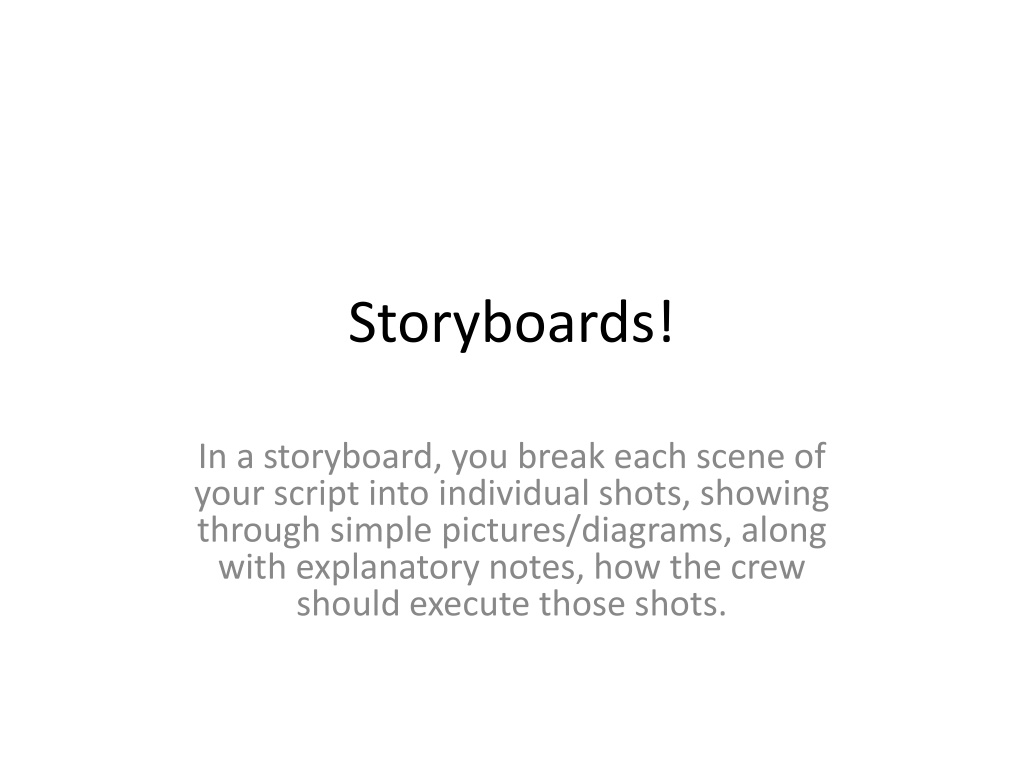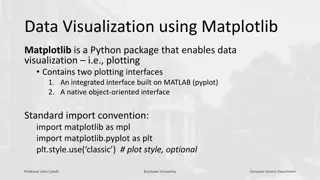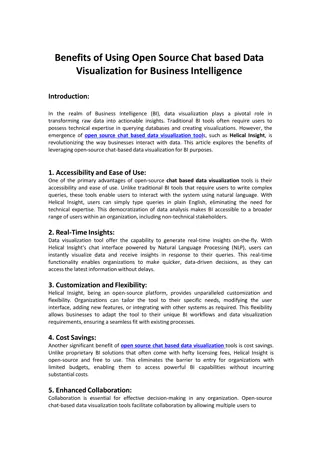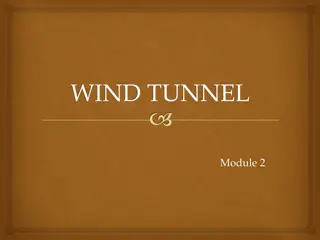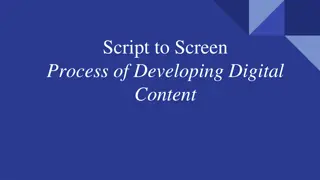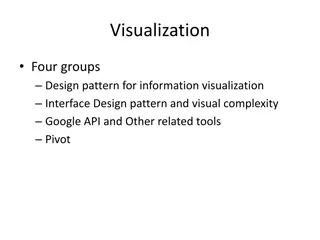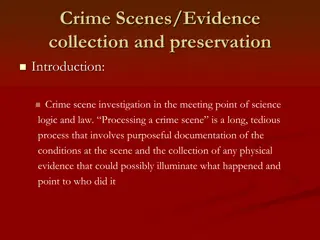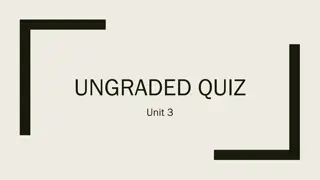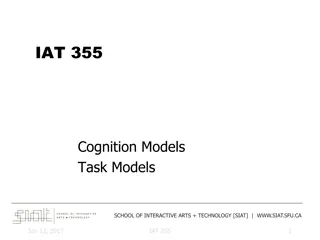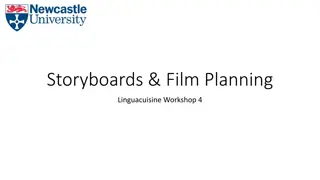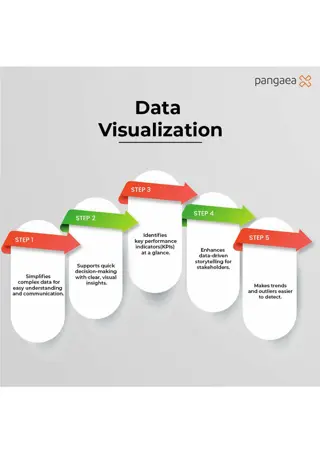Mastering Storyboarding: A Comprehensive Guide for Effective Scene Visualization
Understanding how to create impactful storyboards is crucial for bringing scripts to life. This guide delves into breaking down each scene into shots, conveying audience emotions, and making shot-by-shot creative decisions. Learn how to craft storyboards that effectively communicate your vision to the production team.
Download Presentation

Please find below an Image/Link to download the presentation.
The content on the website is provided AS IS for your information and personal use only. It may not be sold, licensed, or shared on other websites without obtaining consent from the author. Download presentation by click this link. If you encounter any issues during the download, it is possible that the publisher has removed the file from their server.
E N D
Presentation Transcript
Storyboards! In a storyboard, you break each scene of your script into individual shots, showing through simple pictures/diagrams, along with explanatory notes, how the crew should execute those shots.
How to make a storyboard
FIRST: Think through how you NEED the audience to respond to each individual moment. - What do you need them to UNDERSTAND about this moment? - How do you need them to FEEL about this moment?
For Example Jay sitting at a diner table with some fries. Bob walks in. Jay notices. Jay: what s up Bobby-boy! Bob: Jay. [Pause.] How s things?
In this moment, you might need the audience to UNDERSTAND that - Bob wants some of Jay s fries - Bob dislikes Jay - Bob dislikes Jay, but he is trying to hide it so he can get Jay to give him some fries - Etc .
And in this moment, you might need the audience to FEEL about it Sympathy toward Jay Sympathy toward Bob Like laughing Like crying Etc.
SECOND: make shot-by-shot creative choices CONTENT: in this particular shot - We need the audience to UNDERSTAND: - We need the audience to FEEL: STYLE: so, we will choose to shoot it like this: - Actors: placement, posture, movement, voice - Light/set: crucial shapes, props, shadows - Camera: distance, angle, movement, focus - Editing: when and why?
THIRD: storyboard these decisions Diagram/sketch: what s in the shot, including actors, set/light/shadow, and arrows for actor +/or camera movement WHAT: the dialogue/event HOW: acting, camera, light, editing WHY you will shoot it this way
An EFFECTIVE storyboard will Give the cast and crew a clear idea of how to shoot each shot and why to shoot it that way Employ an intelligent variety of shot types, to reflect the changing understandings and feelings you need evoke in your audience. Take the why part seriously, justifying how your creative choices with actors, camera, light, and editing will promote the understandings and feelings you need in that moment.
Now go forth, storyboard, and conquer!
